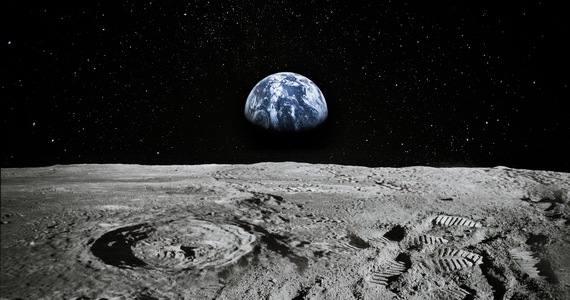The Chinese are not slowing down their space program, and as Chinese scientist Guo Linli revealed at a recent press conference, the lunar soil is rich in ilmenite and iron oxide, which they intend to use to extract oxygen from it. In his opinion, we are talking about up to 30 kilograms of oxygen obtained from every 100 kilograms of lunar soil, which could be necessary to maintain a permanent human presence on the moon. How do?
We did not get exact information, but we know that it is about heating in a small reactor, where the temperature can reach 2500 degrees Celsius. Just as we have no idea if the relevant experiments were actually conducted by the Chang’e 5 spacecraft, which last year provided Chinese researchers with 2 kg of samples from previously unexplored regions of our satellite, but that’s to be expected. We know that according to scientists, the materials presented indicate that the Silver Globe has been volcanically active for much longer than we thought. According to Li Xianhua, their analyzes indicate about 2 billion years ago, and so far it was a period of 2.8 to 3 billion years ago.
We would like to remind you that the Chinese brought the above samples to Earth in December of last year, that is, we are dealing with the first lunar material collected since the American and Soviet missions in the 1970s. Moreover, China is only the third country, after the United States and Russia, to send people into space on its own, but this certainly does not satisfy their ambitions, as evidenced by the Tiangong space station being built, a competitor to the International Space Station (ISS).
In June of this year, the Middle Kingdom sent its first astronauts, and next year, others named Wentian and Mingtian will be connected to the Tianhe unit. All this to facilitate the conquest of the Moon and Mars, since the latter is also of interest to the Chinese Space Agency. For this purpose, the Tianwen-1 mission was created, the task of which is to explore the Red Planet in search of traces of life. This spring, we received proof that everything is going according to plan, because both the probe and the Zurong Mars rover are up and running and regularly upload new data and images to Earth (Curiosity has a few companies, after all).
Back for a moment to the research station on the Moon, the construction and maintenance of which consists in the use of oxygen extracted from the “silver” soil. Its details are kept strictly confidential, which is somewhat understandable, but it also unfortunately raises concerns, especially since we learned in March of this year that the project was being dubbed International Lunar Research too skewed (or very skewed, as we’ll see.) In cooperation with the Russians. And although the Middle Kingdom asserts that it is a facility for “interdisciplinary and multi-subject research, including lunar exploration,” we have in the back of our mind reports of the latest Chinese military tests in space.







